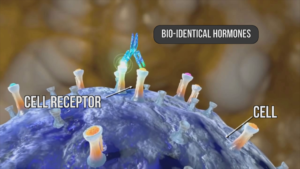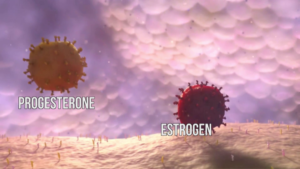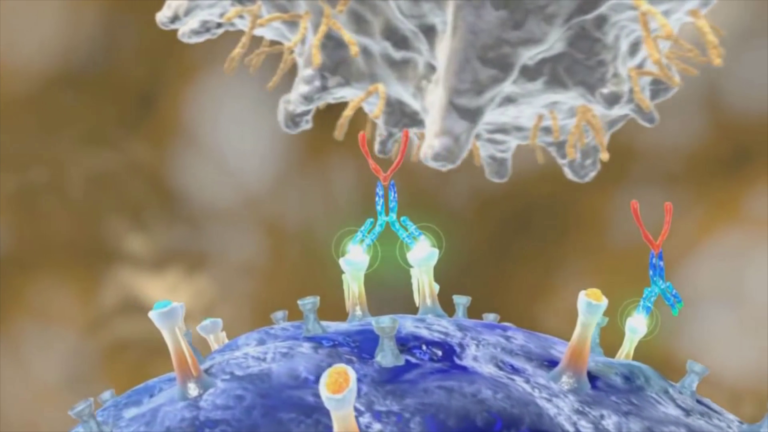Hello, I’m Doctor Bernice Gonzales, the founder of Vital Life Wellness Center. I’m board certified through the American Academy of Anti-Aging and Regenerative Medicine. And I’d like to spend some time today, talking to you about how Bio-Identical hormones and the balance of these hormones can improve the quality of your life.
Let’s start first by defining, what is a hormone is and what is the difference between a BioIdentical and a synthetic hormone?
As many of you might know, a hormone acts or serves as a messenger within our body and it sends very important messages from one cell set to another set of cells for proper function. In our body these sex hormones work in a lock-and-key method. If you’ll imagine the hormone being a key and it attaching to a receptor, i.e. a lock. It’s very important in our body for the hormone to fit just right so that the body will function at its best. Molecularly speaking, the chemical structure of a BioIdentical Hormone matches exactly what we make as humans. Now, a synthetic hormone has side chains and chemical structures that don’t match exactly what we make as humans. And so when that hormone that is synthetic tries to fit into the receptor, it sometimes will have a different type of an effect in the body and can potentially have side effects.
I f you will imagine, if a key is not cut right, it will damage the lock. In the same way, if the hormone is not cut right, if the chemical structure is different than what we make naturally, it will not have the same effects within our system.
f you will imagine, if a key is not cut right, it will damage the lock. In the same way, if the hormone is not cut right, if the chemical structure is different than what we make naturally, it will not have the same effects within our system.
There is a big difference between a BioIdentical and a synthetic hormone and also in the delivery method of all these hormones. And so how do we know when these hormones are off-balanced?
When we study aging, we know that the body reaches its peak at about age 35. From 35 to 40 we start to see shifts in these hormones that can have a multitude of effects in men and women.
In the female patient, the first sex hormone that drops is progesterone.
Ideally estrogen and progesterone should be well balanced. When the progesterone starts to drop, we have more estrogen relative to progesterone and that’s a scenario that we call estrogen dominance. We can see that in women and even in men. But estrogen dominance is known as an age accelerator. How does it affect the person clinically? Well, in the woman that’s pre-menopausal, she might have a whole host of symptoms.
dominance. We can see that in women and even in men. But estrogen dominance is known as an age accelerator. How does it affect the person clinically? Well, in the woman that’s pre-menopausal, she might have a whole host of symptoms.
First and foremost, she might start losing sleep. At night when she tries to fall asleep she can’t fall asleep, or she might wake up in the middle of the night, thinking about the things she needs to get done the next day or the things that she didn’t do the previous day. So the sleep is impaired, which often will lead to fatigue and difficulty getting through the next day. On top of that we can see mood fluxes. Sometimes the female patient will find herself anxious or moody, or having just a variety of mood-type of symptoms.
For the woman that’s still menstruating, she might notice that she has more menstrual cramps, she might notice the flow of her menstrual cycle is heavier, she might even notice clots in the menstruation. She might feel heavy breast, she might feel puffy, she might feel like she’s gaining weight, and at the end of the day all of that does not make for a happy or healthy female.
As testosterone starts to decline, that impacts us as well.
There are a lot of women that might not understand how important testosterone is for us.
Testosterone is not just a male hormone, it is a sex hormone important to men and women. And in women it has all the same effects that it has in our male counter parts. Testosterone is very important for the brain. At the level of the brain, we need testosterone to think clearly and to think sharply.
Without testosterone, sometimes we might have a difficult time finding words, knowing what we want to say and just feeling foggy in our brain. Testosterone is also important for the cardiovascular system. We know that testosterone has a positive effect on the lipids and the cholesterol. So testosterone will help reduce LDL, which is the harmful cholesterol. And testosterone also has a positive effect on triglycerides and sugar metabolism. In fact, low testosterone has been associated with diabetes and even dementia.
Scientifically, testosterone has been shown to have positive effects on the breast. It helps by a process that’s called apoptosis. Apoptosis just means the natural death of cancer cells in the body. So testosterone improves apoptosis and if a female patient every develops a breast cancer cell, it’s been shown to help that breast cancer cell die.
 From a Musculo-skeletal standpoint, testosterone is important for building bone. We’ve used testosterone to help the female patient that has bone loss or osteoporosis. And quite frankly, being a doctor for over 20 years, I’ve never seen a pharmaceutical agent build bone the way that I have seen testosterone replacement in the form of hormone pellets build bone for female and male patients. Also, testosterone is required for women to help maintain and to build muscle. And muscle is so important for us to maintain a healthy body composition.
From a Musculo-skeletal standpoint, testosterone is important for building bone. We’ve used testosterone to help the female patient that has bone loss or osteoporosis. And quite frankly, being a doctor for over 20 years, I’ve never seen a pharmaceutical agent build bone the way that I have seen testosterone replacement in the form of hormone pellets build bone for female and male patients. Also, testosterone is required for women to help maintain and to build muscle. And muscle is so important for us to maintain a healthy body composition.
I can share with you my personal experience, but keeping a healthy weight has been a struggle, especially after 40. And taking care of many, many patients that are female, it’s big concern. A muscle cell will burn 9.5 calories a minute and a fat cell burns 4.5 calories a minute. Without testosterone it’s very difficult for the female patient to build muscle in order to burn fat and improve her body composition.
In our next blog we will discuss hormones from a sexual standpoint.

